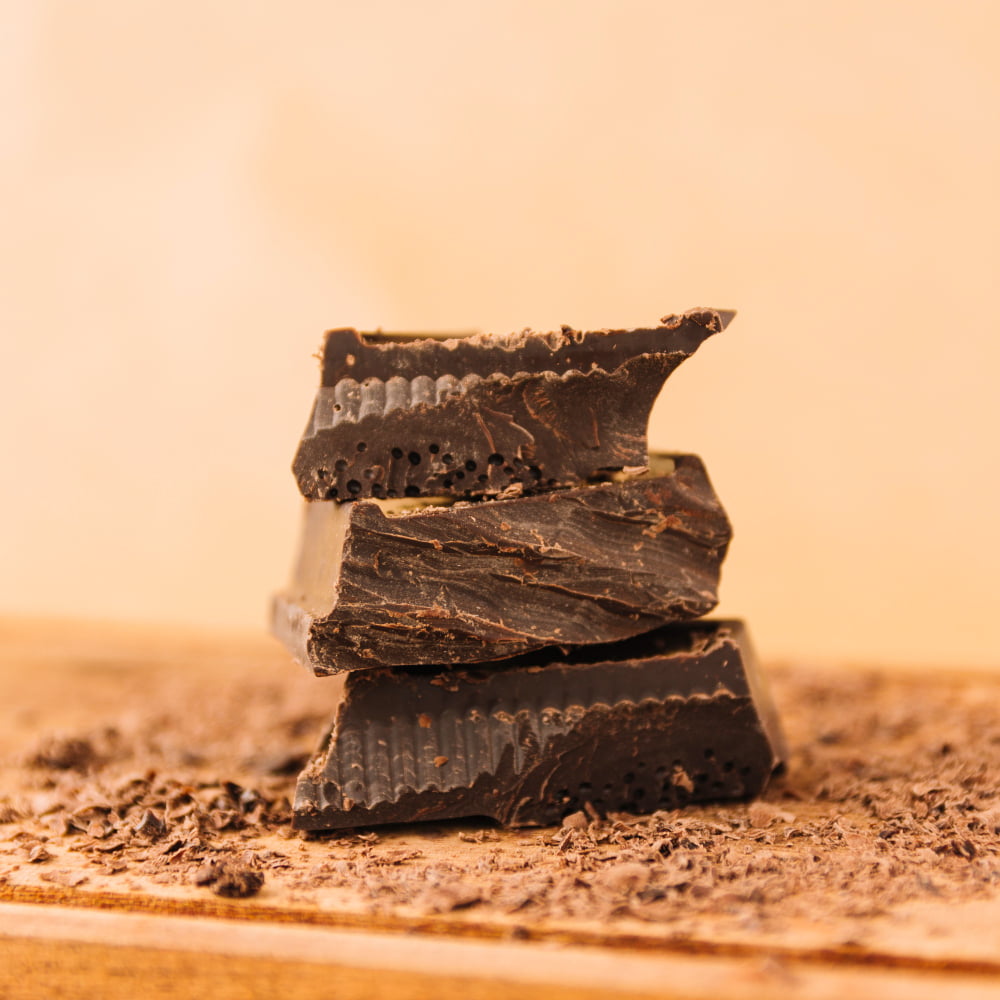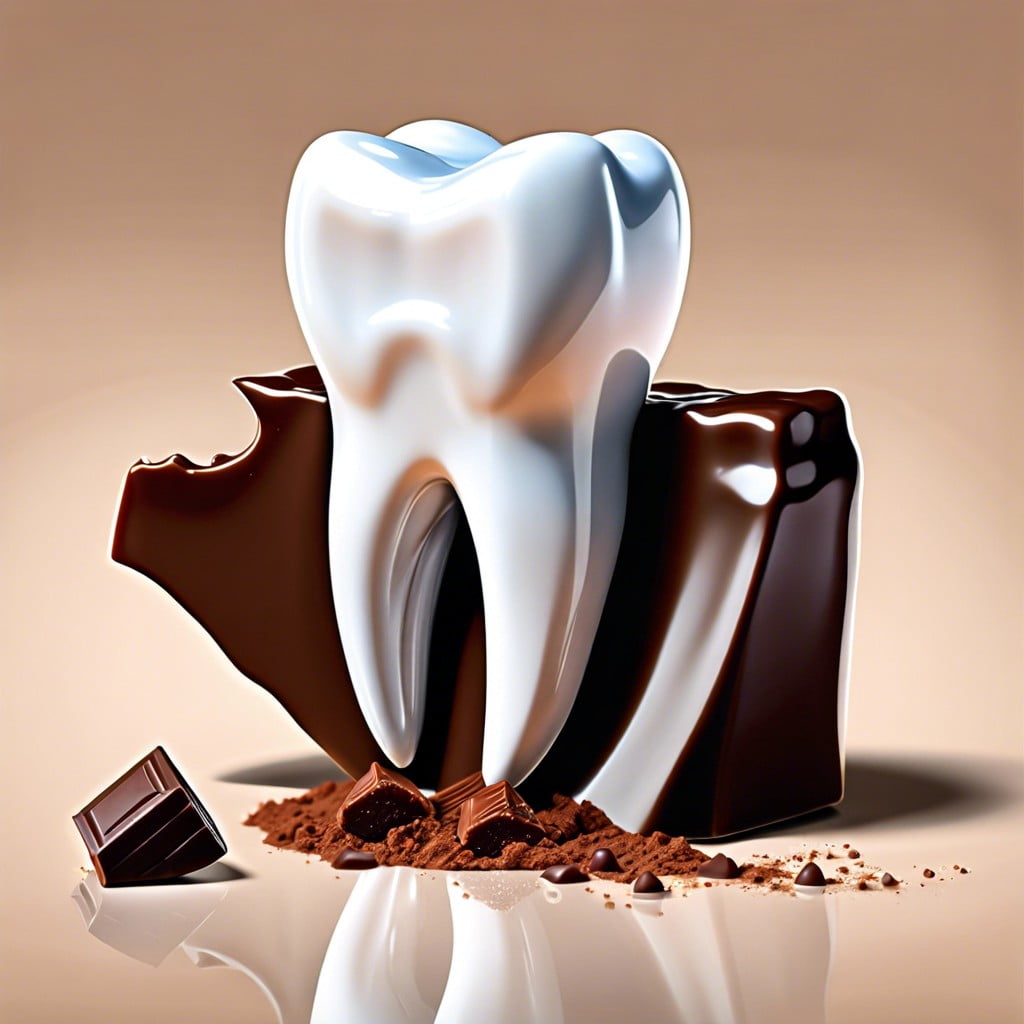Discover when it’s safe to introduce chocolate into your baby’s diet and the considerations you should take into account.
Key takeaways:
- Wait until at least 12 months to introduce chocolate
- Chocolate contains caffeine and theobromine, which can be harmful
- Chocolate is high-allergenic and poses a choking risk
- Offer naturally sweet alternatives like fruits and yogurt
- Monitor for signs of intolerance or allergies when introducing chocolate moderately
Inside
The Official Advice On When Babies Can Have Chocolate

Pediatricians generally recommend waiting until a baby is at least 12 months old before introducing chocolate. This guideline is in place for several reasons.
First, chocolate contains both caffeine and theobromine, two stimulants that can have negative effects on a baby’s developing nervous system. The amount of these compounds in chocolate varies, but they can potentially cause irritability, increased heart rate, and difficulty sleeping in infants.
Additionally, chocolate is a high-allergenic food. Introducing it at a younger age increases the risk of developing a potential allergy or sensitivity. Waiting until the child’s immune system is more mature can help in identifying and managing any adverse reactions.
Moreover, chocolate carries a risk of choking for young babies due to its composition, especially in the form of small pieces or hard candy. Ensuring your child is developmentally ready to handle different food textures is crucial.
Lastly, the high sugar content in chocolate isn’t suitable for infants. Early exposure to sugary treats can encourage a preference for sweet foods, leading to poor eating habits and an increased risk of tooth decay once baby teeth start to emerge.
It’s essential to introduce chocolate – if at all – in moderation, considering its non-nutritional value compared to other foods that could be offered at this developmental stage.
Dessert for Babies and Toddlers
Introducing desserts to a baby or toddler’s diet should be done with attention to nutrition and the child’s developing taste preferences. Highly sweetened foods like chocolate can shape a preference for sweet tastes, which could lead to a pattern of unhealthy eating habits.
Instead, you might consider offering naturally sweet and nutrient-rich alternatives. Pureed fruits, yogurt with a dash of cinnamon, or oatmeal with mashed banana can serve as wholesome desserts. These not only satisfy the craving for sweetness but also provide essential vitamins and minerals.
Remember that desserts for young children should complement their main meals, not replace them. Prioritize whole, minimally processed foods that contribute positively to their growth. Introduce new flavors and textures gradually, monitoring for any signs of intolerance or allergies.
For special occasions, a small amount of chocolate or a chocolate-flavored snack might be appropriate, but always in moderation. Limit the quantity to a small piece or a few nibbles to prevent overconsumption. Keep an eye on how they react to new foods emotionally as well as physically. Positive and calm mealtime experiences lay the foundation for healthy eating patterns in the future.
The Appropriate Age for Offering Chocolate to Children
Pediatricians generally recommend waiting until a child is at least 12 months old before introducing chocolate. This is due to several factors that need consideration:
- Caffeine Content: Chocolate contains caffeine, which can affect a baby’s developing nervous system and may lead to irritability, restlessness, and sleep difficulties.
- Added Sugars: The high sugar content in chocolate can increase the risk of cavities and negatively influence a child’s palate, setting a preference for sweet foods.
- Allergies: While chocolate is not a common allergen, it contains potential allergens such as milk, soy lecithin, and tree nuts, depending on the variety, which could trigger allergic reactions.
- Nutritional Value: Offering nutrient-dense foods is crucial in the early stages of development. Chocolate doesn’t offer the essential nutrients that a growing baby needs.
It is essential to ensure that when chocolate is finally introduced, it is done in moderation and not as a replacement for more nutritious foods. It is also important to monitor the child for any signs of an allergic reaction or digestive issues.
Healthier Snack Alternatives to Chocolate for Toddlers
Opting for healthier snacks over chocolate for toddlers involves providing foods that offer nutritional benefits without added sugars. Fruits, such as apple slices, banana chunks, or pear pieces, are naturally sweet and rich in vitamins. Vegetables like cucumber sticks, baby carrots, and bell pepper strips with hummus appeal as crunchy, nutrient-packed options.
Whole-grain snacks, including oatmeal bites or whole-grain crackers with cheese, give toddlers fiber and protein for steady energy. Yogurt, preferably unsweetened or Greek, provides probiotics and calcium for digestive health and bone development. For a treat similar to chocolate, carob is a safer alternative without the caffeine and theobromine found in chocolate.
Creating a habit of these wholesome snacks can encourage healthy eating patterns as children grow, while saving chocolate for occasional indulgence as they get older.




